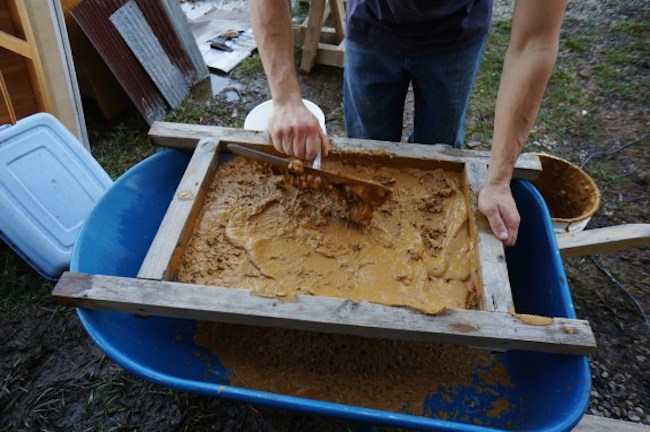Clay based paint is a natural, breathable and zero volatile organic emitting paint. It is perfect for use in interior rooms and certain versions are suitable for humid areas such as kitchens and bathrooms.
Uses
Known use is for painting of interior rooms. Manufacturers state that clay paint can be applied on clay plaster, all other solid plasters and on drywalls, fibrous plasterboards, concrete, plastic-free wallpapers, fleece wallpaper. Unsuitable surfaces are e.g. old glue-bound distemper coatings, lime paints, oil paint coatings, latex- and plastic coatings, metal, surfaces with residues of glue and all even, non-absorbent surfaces as well as permanently humid surfaces.
Potential Uses
None as yet identified. Your ideas welcome!
Processes
Main constituents include:
- clay
- pigment (for white titanium dioxide or marble flour, other colours can be created from natural pigments)
- adhesive: natural adhesives include milk or vegetable casein
- water
There are various homemade DIY can be made with just flour, water, clay and a colour pigment.
The paint can be purchased in powder form therefore reducing its weight for transport purposes and facilitating storage. The powder is mixed with water using an electric drill with paint stirrer. See manufacturer’s data sheets for instructions.
More Information
- http://www.kreidezeit.de/
- http://inglepingle.co.uk/2013/10/making-clay-paint/
- http://www.theyearofmud.com/2016/01/04/make-your-own-clay-paint-recipe/
- Featured image – https://cfileonline.org/wp-content/uploads/2016/02/1a-clay-to-paint-contemporary-ceramic-art.jpg
